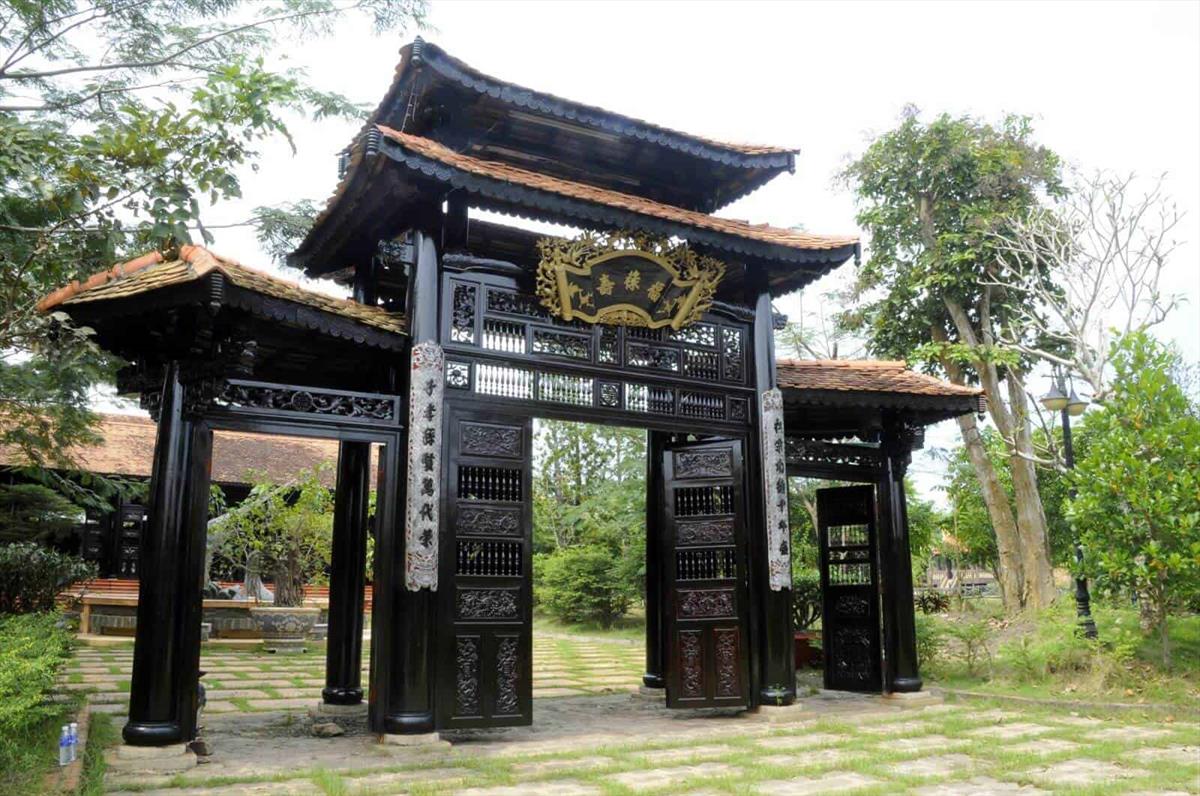Binh Ta Archaeological Site
The Binh Ta Archaeological Site is one of the significant and unique clusters of archaeological relics in Long An province. Located in Duc Hoa Ha commune, Duc Hoa district, about 40 km northeast of Tan An town, the Binh Ta Archaeological Site consists of 16 architectural relics and a system of ancient ponds. These relics belong to the Oc Eo-Phu Nam cultural complex, dating from the 1st to the 7th century AD. The Binh Ta Archaeological Site not only reflects the development of culture and religion of ancient people in the Mekong Delta region but also serves as evidence of cultural exchanges between Vietnam and other Southeast Asian countries.
Among the architectural relics at the Binh Ta Archaeological Site, three excavated and studied relics are Go Don, Go Xoai, and Go Nam Tuoc. These structures are built with bricks, displaying influences from Indian Hindu and Buddhist architecture. Here is some detailed information about these three relics:

- Go Don: It is an architectural relic of temple towers constructed with bricks, measuring 78.5m in length and 60m in width. This relic is situated underground, with the closest point to the ground being 0.4m. During excavations, archaeologists discovered various stone artifacts, such as the Dvarapala deity (temple guardian), the head of the Ganesha deity (blessing deity), and numerous worship items like linga, yoni (symbols of Shiva and Shakti), intricately carved door lintels with floral patterns, sacred water conduits (somasutra), and ancient pottery. In the central shrine pit, approximately 3m deep, there was a broken yoni symbol and many alleged worship stones. The architectural style and discovered artifacts suggest that Go Don is an Indian Hindu architectural relic, belonging to the Oc Eo culture.
- Go Xoai: This brick-built architectural relic has an almost square shape, with each side approximately 20m long. The foundation of the structure is robust and complex, composed of various materials such as basalt stones (badan), red stones, white sand, and pink sand. Go Xoai has a square-shaped worship pit, with sides measuring 2.2m and a depth of over 2.5m. Near the bottom of the worship pit, archaeologists discovered bone ash and a precious collection of artifacts, including small, finely carved gold pieces depicting animals like turtles, snakes, elephants, rings, and a Sanskrit-Pali script with five lines. The first line records a section of the Dharma Sutra, and the second line records a section of the Dharma Cakra Sutra (both sections belong to Buddhism). The script's character style is identified as belonging to the South Indian type (Deccan), dating back to the 8th-9th centuries AD. Through these findings, Go Xoai is recognized as a Buddhist stupa archaeological relic, with the earliest dating in the Mekong Delta.
- Go Nam Tuoc: This brick-built architectural relic measures 17.2m in length and 11.1m in width. The upper part of the structure has been lost, but the foundation retains characteristics of the Oc Eo culture, such as a flexed corner structure, straight brick lines, and a crescent-shaped trinity facing east. Based on these features, Go Nam Tuoc is identified as an Indian Hindu architectural relic.
The Binh Ta Archaeological Site is one of the valuable archaeological heritages of Long An province and Vietnam as a whole. Visitors to Binh Ta not only admire the ancient and sacred architectural structures but also learn about the history, culture, and religion of the region. Binh Ta Archaeological Site is also a place for visitors to experience the cultural exchange and integration between different cultures in the Southeast Asian region. This will be a memorable experience for anyone interested in exploring and understanding Vietnam's archaeological heritage.

